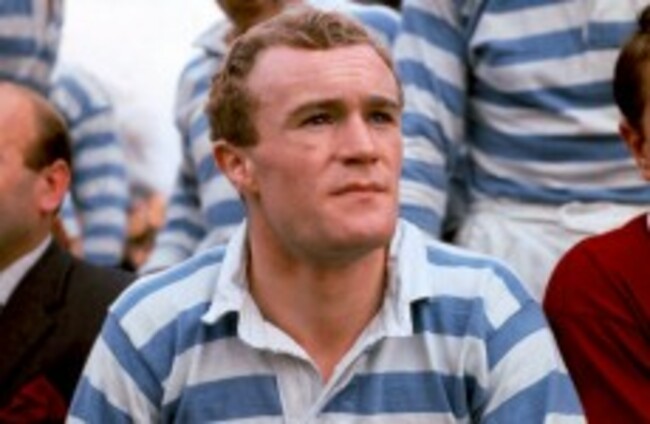RUGBY, LIKE MANY sports, loves an anniversary so it is a pity the Six Nations fixture planners haven’t scheduled Ireland’s ‘even year’ trip to Twickenham for this Saturday.
For it was on 8 February, 1964 that the London ground witnessed the debut not just of one of Ireland’s greatest players, but one of the greatest the game has ever known.
Back then, Mike Gibson was a 21-year-old law student at Cambridge University whose performance in the Varsity Match had persuaded the Irish selectors to pick him at outside-half.
Ireland hadn’t won at Twickenham since their Grand Slam year of 1948 yet, with Gibson pulling the strings in masterful fashion, they beat England 18-5.
In an age where 6-3 and even 0-0 scorelines were not uncommon, Ireland’s margin of victory was hugely impressive given they crossed England’s line four times in an era where a try was worth a mere three points as opposed to the current five.
It was Ireland’s debutant fly-half, who made the difference, with New Zealand rugby writer Terry McLean observing: “Gibson…cut four times and Ireland scored from three of these cuts.”
‘Criss-cross try’
The best of them came when Gibson initiated the move that led to the ‘criss-cross’ try, one of the most celebrated scores in Irish rugby history.
Gibson’s perfectly ‘sold’ dummy and break was followed by a brilliantly delivered reverse pass to centre Jerry Walsh, who in turn fed wing Pat Casey, coming back the other way, for a try under the posts.
Unlike so many players, Gibson turned a brilliant debut into a brilliant career, largely in another position.
Having been replaced at fly-half by Barry McGann in the Ireland line-up when injured in 1968, Gibson sealed a switch to centre, allowing the selectors to field both players.
‘Most complete footballer’
By then Gibson was well into a career which, when it ended following Ireland’s 9-3 win over Australia in Sydney in 1979, had seen him become the world’s most-capped player with 81 Tests — 69 for Ireland and 12 for the British and Irish Lions.
And all this in an amateur are where, unlike today’s well-paid stars such as current Ireland midfield hero Brian O’Driscoll, Gibson was building his Belfast legal practice.
Yet what made Gibson stand out wasn’t so much his endurance so much as a combination of talents that led the late Bill McLaren, for decades BBC television’s rugby commentator, to call him the “most complete footballer I ever saw”.
According to McLaren, Gibson – now a keenly observant spectator aged 71 — had a “forest animal’s instinct for what was on”, change of pace and an ability to “tackle like the crack of doom”.
All these qualities were seen to the full in 1971 when he played a central role in what is still the only Lions side to win a Test series in New Zealand.
‘Near perfect rugby player’
Gibson was in a star-studded and mainly Welsh backline featuring players of the calibre of full-back JPR Williams, wing Gerald Davies, centre John Dawes (the tour captain), fly-half Barry John and scrum-half Gareth Edwards.
Yet Colin Meads, the All Blacks captain in 1971 and an iconic lock, with all of the second row forward’s mistrust of gushing praise, was in no doubt about the pick of the bunch.
“I would judge that 80 percent of All Black back movements came unstuck through Gibson’s quickness, skill and courage”,” he said.
Gibson in 1971 was, according to Meads, “as near the perfect rugby player as I have seen in any position”.
Highlights of Mike Gibson’s Ireland debut can be seen here:
YouTube: Conor Ryan











Was at the match, it was our first win at Twickenham for 25 years. I still remember the silence from the crowd as it dawned on everyone that Ireland had scored. Then uproar of applause.
The second Mike Gibson played no. 8 and played for Lansdowne. The photo shows the original Mike Gibson in his Cambridge Strip
That is the one and only Mike Gibson!
Well. . There was another in the 80s .. a no. 8 from Cork if memory serves… ;-)
“A forest animals instinct” “crack of doom” Sweet Jesus the rugby lads crack me up!
Was lucky enough to see him play, a rugby genius without a doubt.
Wrong mike Gibson in photo!!
Changed the photo of course
Wonderful line for the first try and great off load.